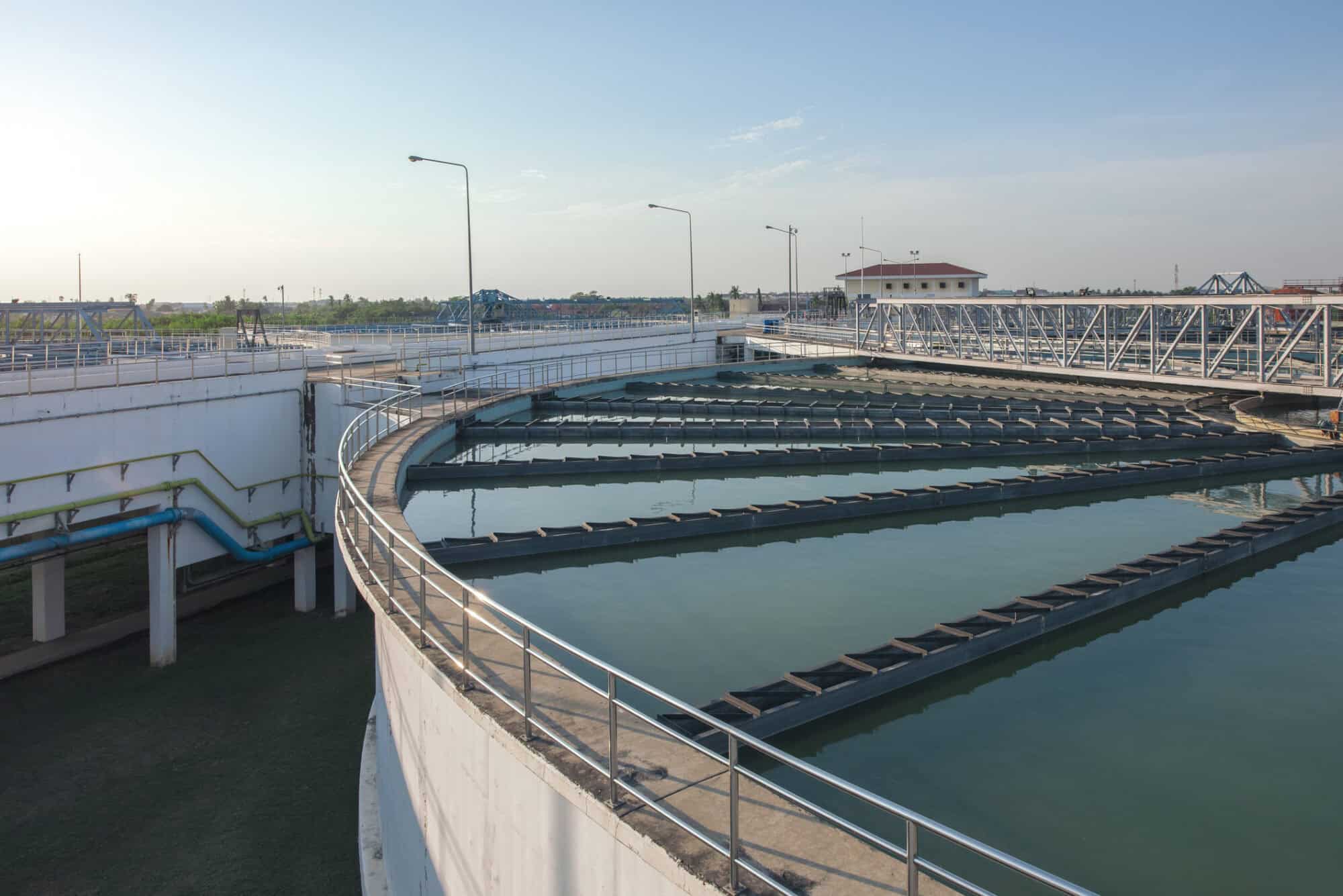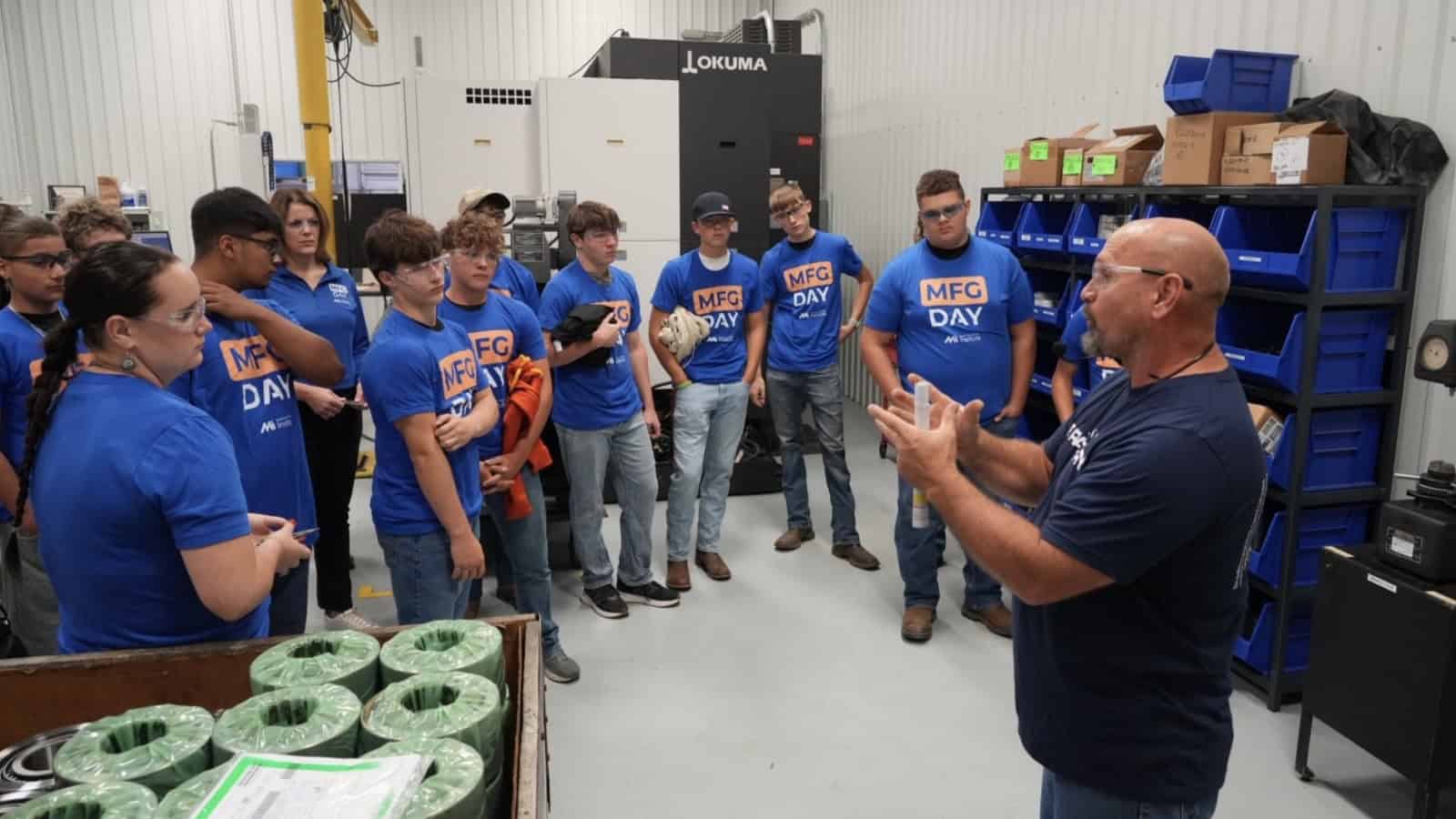NAM, Allies Urge Court to Vacate PFAS Rule

The EPA’s final rule setting national drinking water standards for PFAS should be vacated in its entirety, the NAM and two allies said in an opening brief filed in federal court Monday.
What’s going on: The NAM, the American Chemistry Council and U.S. chemical company Chemours asked the U.S. Court of Appeals for the D.C. Circuit to overturn the EPA’s rule, announced in April, which requires that municipal water systems nationwide remove six types of per- and polyfluoroalkyl substances from drinking water. Trade groups representing the water systems have also sued to overturn the rule.
The grounds: The rule is unlawful and must be set aside for the following reasons:
- The EPA used a deeply flawed cost-benefit analysis to justify the rule.
- The EPA conducted a woefully incomplete feasibility analysis that ignores whether the technology and facilities necessary for compliance actually exist.
- Critical parts of the rule exceed the agency’s statutory authority under the Safe Drinking Water Act and flout the act’s express procedural requirements.
- The EPA failed to consider reasonable alternatives or respond meaningfully to public comments that undercut its judgment.
- The agency “lacked sufficient data to regulate” HFPO-DA, one of the PFAS chemicals that falls under the rule.
Why it’s important: PFAS “are substances at the center of modern innovation and sustain many common technologies including semiconductors, telecommunications, defense systems, life-saving therapeutics and renewable energy sources,” according to the brief.
- The NAM and its co-petitioners “support rational regulation of PFAS that allows manufacturers to continue supporting critical industries, while developing new chemistries and minimizing any potential environmental impacts. But that requires a measured and evidence-based approach that the [r]ule lacks.”
What’s next: Briefing in this case will continue through the spring, with oral argument to follow and a decision from the D.C. Circuit expected in late 2025.
MFG Day 2024: The MI Goes to Kansas

That’s another success for the books! Last week, manufacturers and their supporters nationwide celebrated MFG Day 2024, rolling out the red carpet for students, educators and jobseekers and showcasing modern manufacturing’s diverse career paths.
What’s going on: The Manufacturing Institute, the NAM’s 501(c)3 workforce development and education affiliate, was on the ground in Kansas for multiple plant tours and conversations.
Visiting Bradbury Group: On Thursday’s tour of the Bradbury Group’s plant in Moundridge, Kansas, about 400 students got a firsthand look at how roll-forming and coil-processing equipment is made.
- The company—whose CEO David Cox is an NAM board member—set up stations where attendees could learn about its many career tracks. In addition, local education and community training partners were on-site to showcase job-training initiatives.
- MI President and Executive Director Carolyn Lee participated in the events, touring Bradbury’s facility with approximately 70 students from Newton High School in Newton, Kansas.
Touring with Heroes: On Friday, Lee visited four McPherson, Kansas, manufacturing plants with participants from Heroes MAKE America, the MI initiative that makes connections between the military community and the manufacturing industry.
- The companies were piping-systems manufacturer Viega, insulation and commercial roofing maker Johns Manville, downstream equipment maker Plastics Extrusion Machinery LLC and sustainable construction materials manufacturer CertainTeed.
- At Viega on Friday, Lee spoke with local high school students viewing the facility at the same time as the HMA participants.
Focus on veterans: Friday’s events also featured a networking lunch for HMA participants, including transitioning service members, veterans and military spouses, with human resources representatives from McPherson manufacturers.
- The Bradbury Group—the parent company of four manufacturing businesses in addition to the Bradbury Company, which has participated in MFG Day for nine years—was represented at the lunch by one of its employees, a U.S. military veteran.
Made possible by: This year’s activities were made possibly by generous support from sponsors Union Pacific, Dominion Energy, Johnson & Johnson, Novonesis, UKG, the International Corrugated Packaging Foundation, Lutron Electronics Co. Inc, Winnebago Industries, Alfa Laval (US), Intertek Alchemy, the National Center for Next Generation Manufacturing and Seaway Bolt & Specials Corp.
Stay tuned: MFG Day events will continue across the U.S. throughout October and beyond. You can find the full list of registered events, and a handy map, here.
The last word: “MFG Day is the prime opportunity for manufacturers to demonstrate firsthand the vast career opportunities that exist in industry,” Lee said. “While students, parents and educators remain our primary focus, it’s also a great time to engage other career-seeking groups so that they, too, can see themselves in manufacturing.”
Transportation Sector Mixed: Ship Orders Surge, Aircraft Orders Fall
New orders for manufactured goods decreased 0.2% in August, after rising 4.9% in July. Excluding transportation, new orders declined 0.1%. Orders for durable goods were flat after rising 9.8% in July. Year to date, durable goods orders are down 1.3%. Nondurable goods fell 0.5% in August after rising 0.6% in July. Nonetheless, nondurable goods orders are up 1.8% year to date.
Although the transportation equipment sector overall recorded a slight decline, ships and boats had the biggest rise in orders of any industry in August, increasing 11.3%. After rising 18.3% in July, mining, oil field and gas field machinery orders fell 17.2% in August, followed by nondefense aircraft and parts (-7.5%). Nondefense aircraft and parts are down 31% year to date.
Factory shipments decreased 0.5% in August, after two months of growth. Shipments excluding transportation declined 0.2%, following a 0.3% increase in July. Shipments for durable goods were down 0.6% in August but are up 1.7% year to date. Meanwhile, nondurable goods shipments fell 0.5% in August but are up 1.8% year to date.
Unfilled orders rose 0.4% in August following a 0.2% increase in July. The unfilled orders-to-shipments ratio for durable goods increased to 6.87 from 6.76 in July. Inventories saw a slight gain of 0.1%, with the inventories-to-shipments ratio edging up to 1.46 from 1.45.
Optimism for Future Manufacturing Activity Rises Despite Current Weakness
In September, Texas factory activity declined modestly, and most indicators of manufacturing fell for the month. The production index turned negative to -3.2, signaling a slight decrease in output from August. The new orders index slipped slightly to -5.2, and the capacity utilization index dropped further to -7.0. After rebounding in August, the shipments index fell into negative territory again, declining nearly eight points to -7.0.
Overall business conditions remained negative, with the general business activity index holding relatively steady at -9.0 and the company outlook index improving to -6.4. The outlook uncertainty index, which has been volatile lately, surged nearly 10 points to 17.3 after a significant decrease in the previous month.
Labor market indicators pointed to some employment growth but slightly shorter workweeks in September. The employment index moved up four points, while the hours worked index held steady at -2.5. About 20% of firms reported hiring, while 17% noted layoffs. Moderate upward pressure on prices and wages persisted. The wages and benefits index ticked down to 18.5, roughly aligned with historical averages. The raw materials prices index fell significantly to 18.2, while the finished goods prices index remained nearly unchanged at 8.4.
The outlook for future manufacturing activity remained optimistic. The future production index rose to 35.2, while the future general business activity index was generally unchanged at 11.4.
Employment Falls as Manufacturers Cut Costs Amidst Weak Demand
In September, U.S. manufacturing moved further into contraction. The S&P Global U.S. Manufacturing PMI dropped to 47.3 in September from 47.9 in August, remaining below the 50 threshold that indicates a contraction in the sector.
Output and new orders fell at sharper rates in September amid stronger weakness in demand and political uncertainty. Employment also decreased at the steepest pace since the start of 2010, excluding the significant drop during the pandemic.
New export orders also declined to a larger extent in September, as demand weakened notably in Europe. With new orders continuing to fall, manufacturers scaled back production for the second consecutive month. The resulting drop in backlogs of work was the largest since January. Meanwhile, post-production inventories accumulated for the third straight month. Respondents felt generally optimistic about future business, buoyed by hopes that the current demand slump would be temporary and improve after the presidential election.
Input costs softened but remained marked, and manufacturers increased their selling prices at the fastest pace since April. The pace of inflation eased slightly despite higher costs for raw materials and a rise in shipping rates. The contraction in purchasing activity accelerated amid lower output, reducing input stocks by the largest amount seen in 2024.
Employment Index Falls as Manufacturing Sector Reduces Workforce
In September, the global manufacturing sector contracted for the third consecutive month, with overall operating conditions declining at the fastest rate since October 2023. The J.P. Morgan Global Manufacturing PMI dropped to 48.8 in September from 49.6 in August. Four of the five PMI components were at levels consistent with contraction, while only the suppliers’ delivery times index posted growth. New business orders, new export orders and employment all declined at a faster rate than in August.
The Eurozone saw the steepest decline in production, led by Germany. Output in the U.S. fell deeper into contraction, while China stagnated for the third straight month. Growth in India, Brazil, Spain and the U.K. remained the fastest. Among 32 nations, only 10 reported increased manufacturing production in September, led by India.
Data broken down by sector pointed to widespread malaise across the global industry. The intermediate and investment goods industries both experienced a contraction in production, and, although expanding, consumer goods growth remained tepid. All three subindustries saw declines in new orders and new export business.
In September, manufacturers’ decision-making was targeted at minimizing costs and combating underutilized capacity. Employment fell for the second consecutive month and to the greatest extent since December 2023, as continued decreases in backlogs of work suppressed the need for workers. The ongoing downturn dipped confidence to a 22-month low in September. On the other hand, inflationary pressures continued to ease, registering the mildest rates of increase in both input costs and selling prices since March.
New Orders and Production Continue Decline Despite Slower Rate
In September, the U.S. manufacturing sector contracted for the sixth consecutive month, with the Manufacturing PMI matching the figure in August at 47.2%. New orders (46.1%), production (49.8%) and backlog of orders (44.1%) remained in contraction, but at a slower rate of decline. Inventories dropped significantly from a rate of growth (50.3%) to contraction (43.9%), and supplier deliveries are still slowing. Demand continued to be weak, with companies hesitant to invest due to federal monetary policy and election uncertainty.
The New Orders Index continued its contraction for the sixth consecutive month but is up 1.5 percentage points from August. This decline reflects ongoing uncertainty and concern about a lack of new order activity, with only two major sectors, computer and electronic products and food, beverage and tobacco products, reporting an increase in new orders. Their confidence in the future economic environment remains at its lowest levels since the COVID-19 pandemic recovery.
The Production Index remained in contraction in September but is up 5.0 percentage points from August. Of the six largest manufacturing sectors, three (computer and electronic products; food, beverage and tobacco products; and fabricated metal products) reported increased production.
The Employment Index fell 2.1 percentage points from August, among the lowest readings since July 2020. Companies continued to reduce headcounts through layoffs, attrition and hiring freezes, with only the food, beverage and tobacco products and machinery sectors expanding employment in September.
The Prices Index dropped 5.7 percentage points to 48.3%, indicating raw materials prices decreased in September after eight straight months of increases. Key commodity prices were less volatile, with petroleum-derived products showing weakness, aluminum indicating slowing growth, corrugate and ocean freight continuing growth and steel and steel products prices easing. Approximately 13% of companies reported paying higher prices, compared to 21% in August.
Job Openings Rise, Hiring and Separations Decline
In August, the number of job openings rose to 8.0 million, an increase of 329,000 from the previous month but a decrease of 1,318,000 from the previous year. The job openings rate increased to 4.8%, up from 4.6% in July but down from 5.6% last year.
Job openings for manufacturing edged up slightly by 1,000 to 506,000 in August, with the increase of 12,000 job openings in nondurable goods making up for the decrease of 11,000 in durable goods. The manufacturing job openings rate stayed consistent at 3.8% from last month. The rate for durable goods manufacturing dropped from 4.0% to 3.9%, while it rose from 3.3% to 3.5% for nondurable goods.
The number of hires fell to 5.3 million from 5.4 million in August and are down 571,000 from the previous year. The hires rate dipped 0.1% to 3.3%. The hires rate for manufacturing declined 0.3% to 2.4%. The hires rate for durable and nondurable goods dropped to 2.2% and 2.7%, respectively.
Total separations, including quits, layoffs, discharges and other separations, fell 317,000 from July to right under 5.0 million and are down 612,000 from the previous year. The total separations rate declined to 3.1% and to 2.5% for manufacturing. The quit and layoff rates continue to remain lower for manufacturing than the total nonfarm sector.
September Jobs: Strong Gains, Manufacturing Losses, Earnings Increase
Nonfarm payroll employment increased by 254,000 in September, blowing past the consensus estimate of 150,000 job gains. July and August job gains were also revised upward by 72,000 jobs. The 12-month average stands at 203,000 job gains per month. Manufacturing employment, however, declined by 7,000, largely influenced by a 6,500 decrease in motor vehicles and parts. In addition, August’s 24,000 manufacturing job loss was revised down to 27,000. The unemployment rate dipped 0.1 percentage point to 4.1%, while the labor force participation rate remained unchanged at 62.7%.
The employment-population ratio ticked up slightly to 60.2%, though it’s down 0.2 percentage points from a year ago. Employed persons who are part-time workers for economic reasons decreased by 206,000 to 4.6 million but are up from 4.1 million in September 2023. Native born employment is up over the month but down 825,000 over the year. Meanwhile, foreign born employment is up 1,201,000 over the year.
Average hourly earnings for all private nonfarm payroll employees rose 0.4%, or 13 cents, reaching $35.36. Over the past year, earnings have grown 4.0%. The average workweek for all employees edged down by 0.1 hour to 34.2 hours in September.
Small Manufacturers Sound the Alarm on Uncompetitive R&D Tax Policy

As part of its “Manufacturing Wins” tax campaign, the NAM’s small and medium-sized manufacturers are drawing lawmakers’ attention to R&D amortization, an uncompetitive tax policy that’s killing jobs and dragging down the world’s most innovative economy.
The problem: “Allowing companies like Sukup Manufacturing to immediately expense R&D investments had been part of the tax code for more than 70 years,” explained Steve Sukup, president and CEO of the Sheffield, Iowa–based company. “But since 2022, we have had to amortize our R&D expenses over five years.”
- “This affects manufacturers everywhere and has a dramatic impact on the U.S. economy, as the private sector accounts for more than 75% of total R&D spending—with small businesses accounting for approximately $90 billion of all private-sector R&D investments.”
- Another heavily impacted manufacturer is Husco of Waukesha, Wisconsin. “In 2024, we have $20 million less liquidity than we would have under the old R&D expensing rules,” said Husco President and CEO Austin Ramirez. “That $20 million represents almost our entire capital budget for 2024.”
Threatening jobs: “Limiting R&D doesn’t just limit innovation—it also has a direct impact on people’s jobs here,” said Tom Tredway, president of Erie Molded Packaging in Pennsylvania. “And these are quality, high-paying jobs—but they are at risk if immediate R&D expensing isn’t restored.”
- “Bringing a new medical device to market is a multiyear process, necessitating significant investments in R&D,” explained Chuck Wetherington, president of BTE Technologies in Hanover, Maryland. “Being required to amortize our R&D expenses has forced us to staff our technical team at a reduced level, slowing down the development of new products.”
Handing a win to China: “China allows a ‘super deduction’ for manufacturing R&D equal to 200% of research costs. That is what we are up against,” said Lisa Winton, who co-founded Winton Machine Company in Suwanee, Georgia. “Meanwhile, Belgium is the only other developed nation with an amortization requirement like the United States.”
- “When you look at the generosity of foreign support, especially China’s, versus the United States, it’s so lopsided,” said Daryl Bouwkamp, who serves as Vermeer Corporation’s senior director of international business development and government affairs. “China is trying to drive behavior toward R&D—and that’s something we’re lacking.”
- “Suddenly, China started manufacturing bagel baskets and shipping them to New York City for cheaper than I could get the steel,” recalled Drew Greenblatt, president and owner of Marlin Steel Wire Products. “We realized we couldn’t thrive in a commodities market. … We [need] to be able to say to buyers, ‘You must buy from the American innovative company because we’re coming up with such slick ideas that our product blows the competition away.’”
Innovation at risk: “[Now is the time] we most need to make investments in innovation, both around the technologies that we provide in our products enabling the United States’ economic growth and success [and] the technologies we use to produce the products that we make,” said Karl Hutter, CEO of Click Bond in Carson City, Nevada.
- Patricia Miller of M4 Factory in Woodstock, Illinois, highlighted that manufacturers are key to meeting the world’s most intractable challenges: “We need to keep those [companies] that are driving the future of innovation and manufacturing in the U.S. economically viable and competitive.”
The last word: “Congress not allowing manufacturers to immediately expense R&D expenses directly translates to fewer quality jobs in the manufacturing sector while our foreign competitors are implementing vastly more beneficial R&D benefits,” Tredway concluded.
